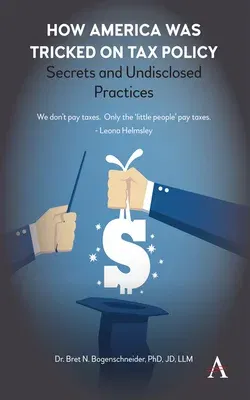How America was Tricked on Tax Policy explains how regular citizens
were "tricked" by the outdated view of economists that much heavier
taxation of labor rather than capital is economically justifiable. The
truth is that workers pay their taxes while the rich pay very little.
Based on reputable sources of information, including the publications of
the Organization for Economic Cooperation and Development (OECD),
official statistics data, and the publications in high-ranked journals,
the book paves the way for a new policy making process aimed to achieve
more sustainable taxation and to increase the wellbeing of citizens as
the main goal of any modern state policy.
Dealing with critically important and underexplored topics in tax
policy, the book challenges an enshrined dogma that is rarely challenged
at the level of policy. In doing so, this book envisions policy changes
that could be highly impactful in a new political administration. This
book proposes that governments should look for not just corporate income
tax rate reduction when announcing their tax reforms but should equally
focus on the reduction of the overall tax burden on labor. The negative
impact and high social cost of wage taxation is exemplified by the key
areas of tax policy that are relevant for every wealthy state, such as
taking due care of public health, investing in education and wellbeing
of children, and supporting small business for the overall benefit to
society.
The book provides sound arguments that "labor" should essentially be
treated as "human capital" and be given the same tax treatment as that
of classically understood "capital". This understanding is extremely
relevant nowadays as we are facing the issues of digitalization, in
general, and "robotization," where a new type of labor, i.e., nonhuman
labor, is entering the workforce. The book's fresh novelty comes from
its new approach to tax policy while addressing the issues relevant to
the "digital" era such as taxation of artificial intelligence or
"robots" that are currently partially substituting the human workforce.
The book compellingly argues how tax policy could be improved by
incorporating science and scientific methods.

